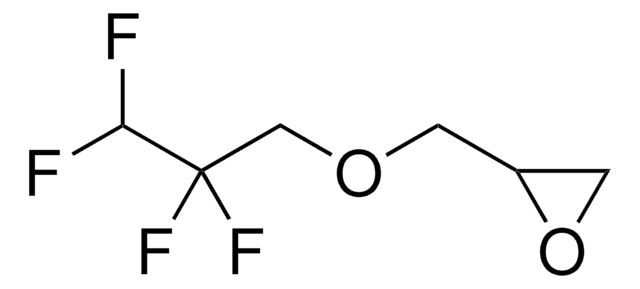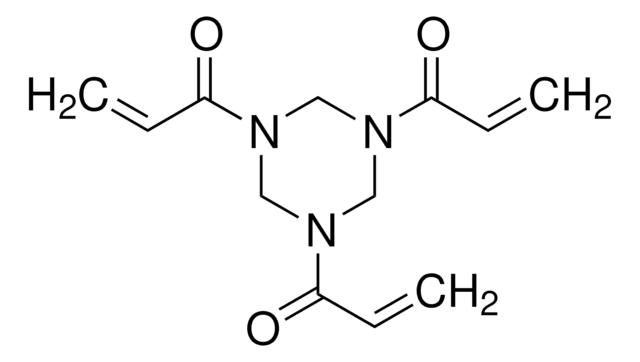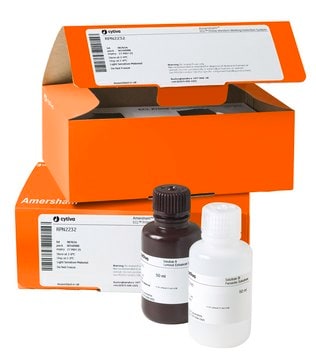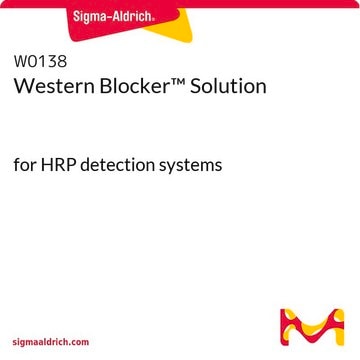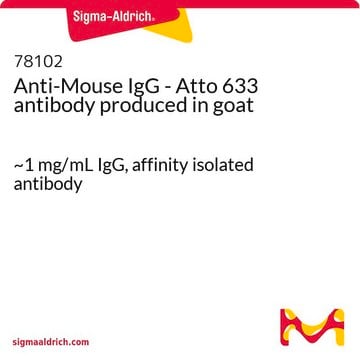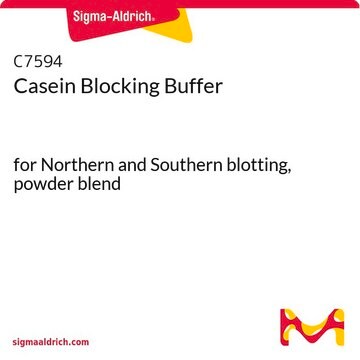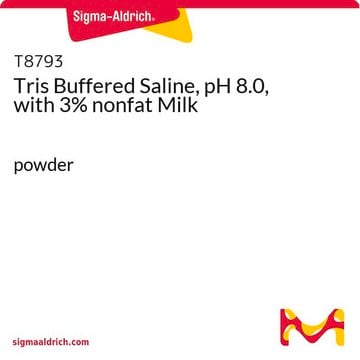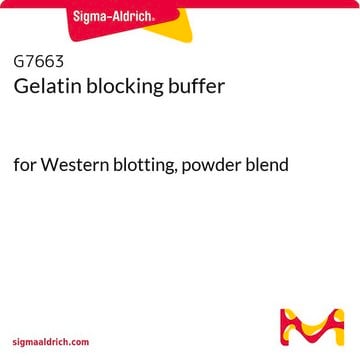WESTBL-RO
Roche
Western Blocking Reagent, Solution
solution, sufficient for 10 blots (11921673001 [100 cm2]), sufficient for 60 blots (11921681001 [100 cm2])
Synonym(s):
blocking reagent for western blots
Sign Into View Organizational & Contract Pricing
All Photos(1)
About This Item
UNSPSC Code:
12352200
Recommended Products
form
solution
Quality Level
usage
sufficient for 10 blots (11921673001 [100 cm2])
sufficient for 60 blots (11921681001 [100 cm2])
packaging
pkg of 100 mL (11921673001)
pkg of 6 × 100 mL (11921681001)
manufacturer/tradename
Roche
storage temp.
2-8°C
Related Categories
Application
Western Blocking Reagent is used as a general blocking agent during western blotting experiments and immunofluorescence staining. The reagent is used in steps such as blocking the membrane, membrane washing steps, and diluting detection antibodies.
Quality
Each lot is function tested (dot blot).
Physical form
The Western Blocking Reagent is a 10x solution that contains 10% purified casein protein in maleic-acid buffer.
Preparation Note
Working solution: PREPARATION OF WORKING SOLUTIONS
Note: Since sodium azide inhibits POD, it must not be used as antimicrobial agent when using POD-conjugates.
Note: 0.1% Tween 20 is suitable for the most applications, but—depending on the membrane and on the antibody used—different detergents (like SDS, Triton X-100 and Nonidet P40 and detergent concentrations from 0.01 to 1% may lead to better results.
Note: Since sodium azide inhibits POD, it must not be used as antimicrobial agent when using POD-conjugates.
Note: The concentration of the blocking reagent is an important parameter for improvement of the signal to noise ratio in Western blots. If high background appears even under optimized antibody concentrations, increase the concentration of the blocking reagent during the antibody incubations and washing steps from 0.5% to 1%. In case of weak signals even with prolonged antibody incubations lower the concentration of blocking reagent during the antibody incubations and washing steps from 0.5% to 0.1%.
- Tris buffered saline (TBS), pH 7.5
Note: Since sodium azide inhibits POD, it must not be used as antimicrobial agent when using POD-conjugates.
- TBS-Tween (TBST)
Note: 0.1% Tween 20 is suitable for the most applications, but—depending on the membrane and on the antibody used—different detergents (like SDS, Triton X-100 and Nonidet P40 and detergent concentrations from 0.01 to 1% may lead to better results.
- Blocking solution (1%)
Note: Since sodium azide inhibits POD, it must not be used as antimicrobial agent when using POD-conjugates.
- Blocking solution (0.5%)
- Antibody solutions
Note: The concentration of the blocking reagent is an important parameter for improvement of the signal to noise ratio in Western blots. If high background appears even under optimized antibody concentrations, increase the concentration of the blocking reagent during the antibody incubations and washing steps from 0.5% to 1%. In case of weak signals even with prolonged antibody incubations lower the concentration of blocking reagent during the antibody incubations and washing steps from 0.5% to 0.1%.
Other Notes
For life science research only. Not for use in diagnostic procedures.
Storage Class Code
12 - Non Combustible Liquids
WGK
WGK 1
Flash Point(F)
does not flash
Flash Point(C)
does not flash
Certificates of Analysis (COA)
Search for Certificates of Analysis (COA) by entering the products Lot/Batch Number. Lot and Batch Numbers can be found on a product’s label following the words ‘Lot’ or ‘Batch’.
Already Own This Product?
Find documentation for the products that you have recently purchased in the Document Library.
Customers Also Viewed
Cell-free synthesis of cytochrome bo3 ubiquinol oxidase in artificial membranes
Yildiz AA, et al.
Analytical Biochemistry, 423, 39-45 (2012)
Does FACS perturb gene expression?
Richardson GM, et al.
Cytometry. Part A : the Journal of the International Society For Analytical Cytology, 87, 166-175 (2015)
The PINK1/Parkin-mediated mitophagy is compromised by PD-associated mutations.
Geisler S
Autophagy, 6(7), 871-878 (2010)
Increase in cardiac myosin binding protein-C plasma levels is a sensitive and cardiac-specific biomarker of myocardial infarction
Govindan S, et al.
American Journal of Cardiovascular Disease, 3, 60-70 (2013)
Generation of IgG-Fc Glycovariants Using Recombinant Glycosidases and Glycosyltransferases
Quast I, et al.
The Journal of Clinical Investigation (2015)
Our team of scientists has experience in all areas of research including Life Science, Material Science, Chemical Synthesis, Chromatography, Analytical and many others.
Contact Technical Service